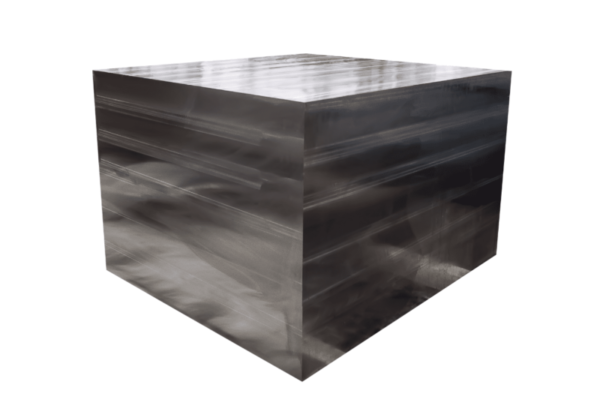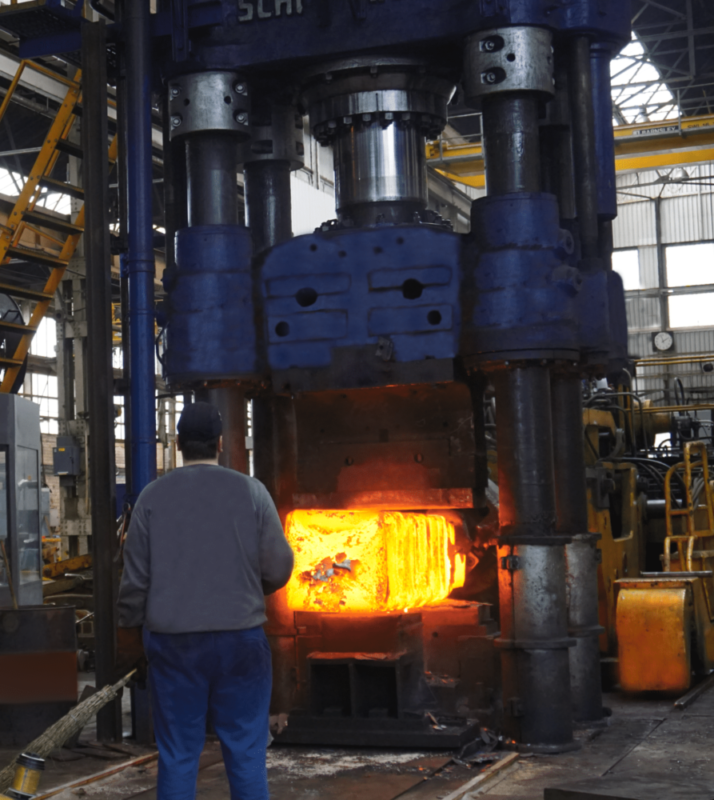Common stainless steel grades used for forging
We forge a range of stainless steel grades and often have stainless steel in stock. We can produce stainless steel forgings from a range of alloys including 300 series alloys: 303, 304, 304L, 316, 316L, 317, 321 and 400 series alloys: 410, 420 and 440C.
Why stainless steel forging?
Reasons why companies chose stainless steel forging include:
- Stainless steel is known for its superior properties such as corrosion and heat resistance.
Parts forged using stainless steel
With components forged from stainless steel being incredibly strong and resistant to corrosion, this makes them perfectly suited to industries including Power Generation, Chemical, Nuclear, Marine and Oil and Gas.
Forged parts include:
- Pump shafts and Impellers.
- Nuclear waste containers
- Industrial mixers
- Marine propulsion shafts

Stainless steel differences
Stainless steels are categorised dependent upon their microstructure, ferritic, austenitic and martensitic which are iron crystal structure options that affect the overall quality of the steel.
Ferritic
Containing the least amount of carbon is the ferrite crystals. This means that these alloys have an average hardness and strength but limited corrosion resistance.
Austenitic
Heating ferrite allows the crystal structure to change and absorb up to 2% carbon, however, the carbon will only remain under high temperatures as it often converts back when it is cooled. To hold the austenitic properties, manganese or nickel must be added. Austenitic alloys have both high corrosion resistance and hardness.
Martensitic
Martensitic stainless steel alloys are the leading property of stainless steel. It is created by quenching the steel. It offers excellent hardness and proves to be a popular option if sharp blades are required.
Precipitation hardening stainless steels
The precipitation hardening stainless steels are a suite of corrosion resistant alloys some of which can be heat treated to provide tensile strengths up to 1650 N/mm2 . These materials are widely used in the Aerospace, Nuclear and Marine sectors. Typical grades include FV520B, 15.5 PH and 17/4 PH (A693 Type 630).

What is duplex and super duplex stainless?
Duplex stainless steel has a two-phase microstructure that consists of 50% ferritic grains and 50% austenitic grains, combining the best of both properties. Duplex grade is based upon 22%Cr whereas super duplex grade is based on upon 25%Cr.
Duplex stainless steels offer increased strength, roughly twice as strong as a normal ferritic or austenitic stainless steel. This is due to its increased yield strength, thinner sections of duplex can be created providing huge weight savings. Stainless steel forging that’s made from duplex and super duplex are often for pressure vessels.
